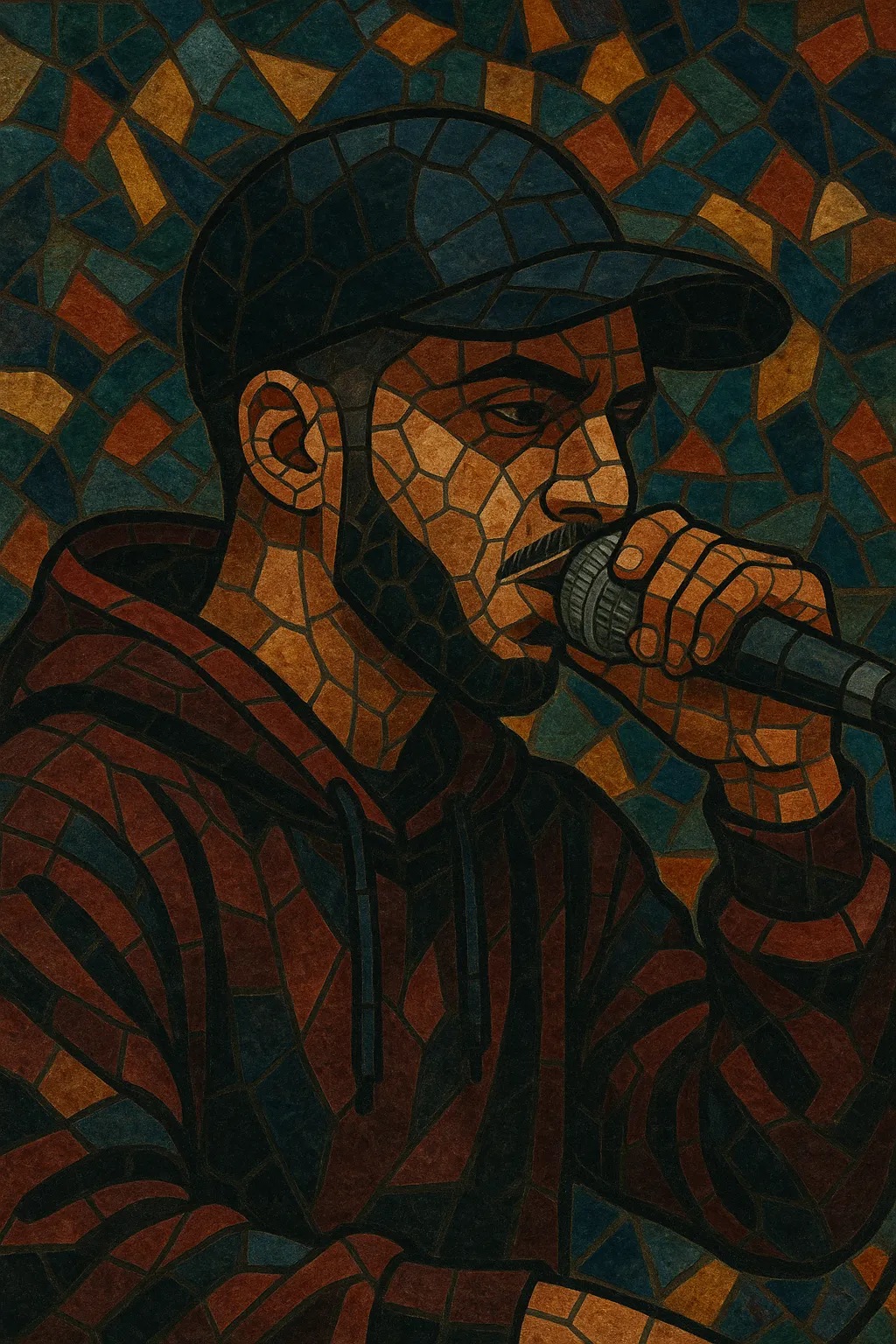Moroccan rap is a hip hop movement from Morocco that blends American rap foundations with North African rhythms, melodies, and street vernaculars. It is primarily performed in Darija (Moroccan Arabic), often mixed with French, Modern Standard Arabic, and Tamazight, creating a distinct linguistic and cultural voice.
Musically, the style draws on trap and boom-bap production while sampling or referencing local sources such as gnawa grooves, chaabi claps, and raï-adjacent melodic turns. Lyrically it ranges from sharp social critique and political commentary to autobiographical storytelling, swaggering bravado, and urban poetry reflecting the realities of Moroccan cities and the diaspora.
Moroccan rap coalesced in the late 1990s as local crews absorbed American hip hop and French rap while grounding their expression in Darija and Moroccan social realities. Early incubators such as L'Boulevard festival in Casablanca provided stages, workshops, and a competitive "Tremplin" that helped professionalize the scene. Pioneers like Don Bigg and groups such as H-Kayne and Fnaire pushed the genre into the public eye by combining hard-hitting flows with Moroccan musical references, carving space for rap in a market dominated by pop and traditional music.
Throughout the 2010s, YouTube, Facebook, and later streaming platforms enabled rapid circulation of singles and videos. Artists refined a local sound that fused boom-bap and trap with gnawa bass patterns, chaabi handclaps, and Maghrebi melodic sensibilities. The scene diversified thematically: social critique, identity, migration, and daily life featured alongside club-oriented and street anthems. Cross-Maghreb collaborations and ties with the French rap industry strengthened the scene’s visibility across Europe and the MENA region.
By the late 2010s, trap and drill became dominant production styles. Viral hits and high-concept videos from figures like ElGrandeToto, Dizzy DROS, Issam, and 7liwa showcased contemporary aesthetics—Auto-Tune, 808 sub-bass, and rhythmic triplets—while retaining Moroccan identity through language, references, and rhythmic allusions. The scene also witnessed debates around censorship, social boundaries, and artistic freedom, underscoring rap’s role as a forum for commentary and youth expression. Today, Moroccan rap is a key pole within Arabic hip hop, influencing pop crossovers at home and resonating with diasporic communities in France, Spain, Belgium, and the Netherlands.


